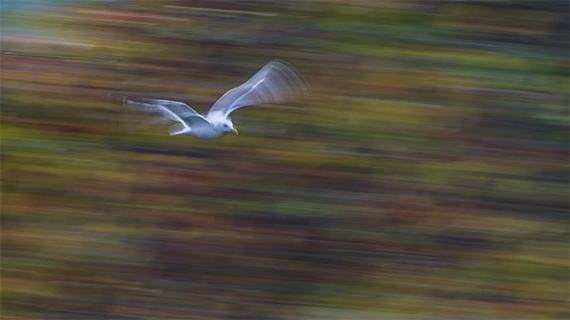Getting a sharp image of a bird in flight is a challenging task, but it’s equally rewarding and satisfying. These small and magnificent creatures with their quick and unpredictable motion make the task of a bird photographer a difficult one. So, if you’re out for some bird photography, it is essential that you have the right gear and use the right techniques to get tack sharp photographs. Wildlife photographer Sam Rowley shares everything you need to know to get sharp action shots from our feathered friends:

Equipment for Bird Photography
- A sturdy tripod with a smooth gimbal head that lets you pan conveniently while taking panning shots. However, a tripod may not always be necessary, which we’ll discuss later in this article.
- A camera with a fast and accurate focusing system that can conveniently track the birds in motion.
- A zoom lens with extra reach—something around the 400mm mark.
- Avoid tele-converters, as they tend to slow down the focusing system of the camera.
This is a decent starting point for bird photography. Get to know your gear and be comfortable using it. Practice with your setup to increase your hit-rate.
Camera Settings for Bird Photography
Birds are very fast when in motion and the motion of their wings can be a bit tricky to freeze in the photograph. Rowley shares that, as a general rule of thumb, you can use a 1/1000 second shutter speed for slower birds and around 1/4000 second for faster birds.
To get the whole bird in focus, you will need to set your aperture on the narrower side—something like f/9. If you have your knowledge on the exposure triangle right, you must have calculated that a narrow aperture combined with a fast shutter speed will require you to bump up your ISO.

A panning image of a bird in flight
If you don’t want to crank up the ISO, to get a less noisy image you can use a slower shutter speed to your advantage. Try panning along with the motion of the bird for a much more artistic and engaging photo. This is where a smooth gimbal head becomes necessary.
Techniques for Bird Photography
- Try to stay at a higher ground level to be closer to the bird’s eye level.
- Position yourself so the bird is lit from the front. This will help the camera capture more details.
- Set up your camera on a tripod if you aim to set up shop and wait for the decisive moment, or if you want to take some panning shots at slow shutter speeds. However, if you plan to move around and look for different varieties of birds, you can forego the tripod and just shoot handheld.
- While this point is not related to photography or equipment, it’s essential that you learn to read the body language and behavior of the birds you’re photographing. This will help you make an educated guess on when the bird is about to take off and be prepared accordingly to take the shot.
- While composing the shot, be sure to keep both of your eyes open. Use one eye to compose the shot in the viewfinder and the other to keep track of the bird.
- While it may be tempting to start focus on the birds while they are at a distance, Rowley shares that it’s better to wait to start focusing on the bird until it’s a few seconds away from you. Cameras tend to lose focus when the birds start coming closer into the sweet spot.
Focusing Technique for Bird Photography
Focusing is critical in any type of photography, and the sheer speed of the birds can make it even more difficult for the camera to grab focus. Rowley recommends the following techniques to improve the focusing accuracy:
- Decent camera bodies tend to do a good job of holding on to the moving subject by using multiple point focusing. If your camera is struggling, try switching over to single point auto focus.
- To help the lens achieve focus faster, you can limit the focusing distance of the lens by setting it to the tele-end.
- If the camera spends most of its time with the shutter open, it gets less time to hold focus on the subject. For this reason, Rowley recommends that you limit the frame rate of your camera instead of shooting at the max frame rate.
To add on to what Rowley has shared, you’ll also want to switch over to continuous focus mode rather than being in single servo mode. This will allow the camera to continuously focus on the bird as it moves toward or away from you and increase the chance of getting the shot in focus.
If you have some more tips to get sharp images of bird, be sure to share it with us in the comments below.
Like This Article?
Don't Miss The Next One!
Join over 100,000 photographers of all experience levels who receive our free photography tips and articles to stay current:






Fabulous! Very clearly explained and shown